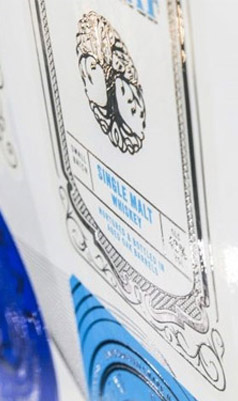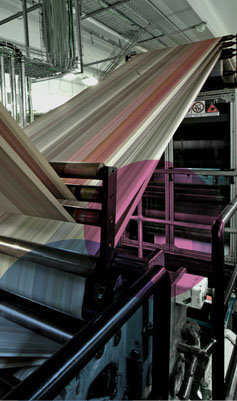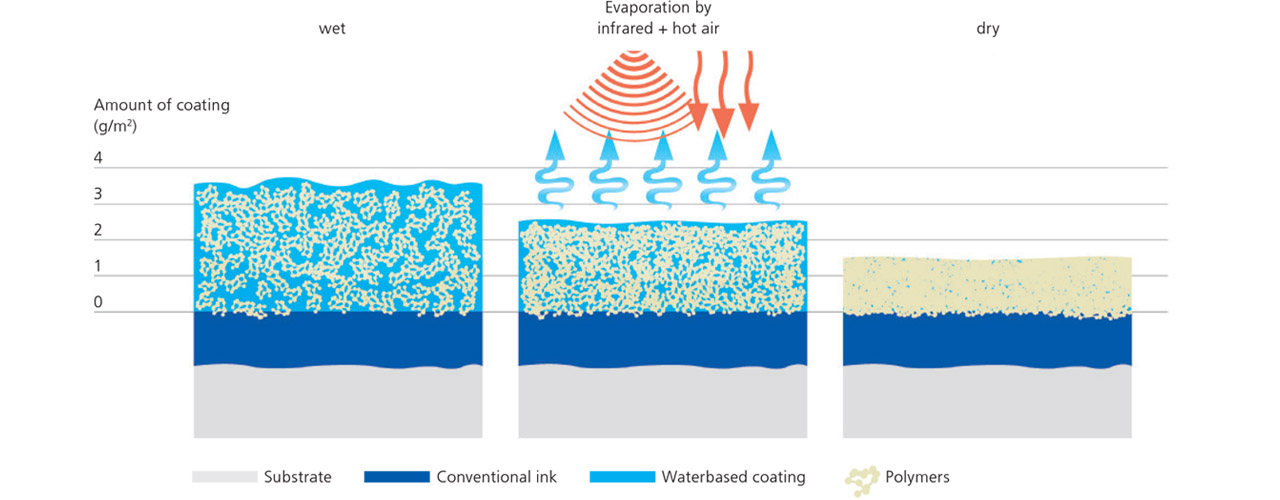

Embalagem Flexível
A ACTEGA é um líder global em embalagem flexível fornecendo tintas, primers, vernizes e adesivos.
DESCUBRA MAIS

A ACTEGA é um líder global em embalagem flexível fornecendo tintas, primers, vernizes e adesivos.
DESCUBRA MAIS

Nosso foco em inovação é a parte central do nosso DNA, por isso investimos intensamente.
DESCUBRA MAIS

A série How-to é uma coleção de conteúdos para ajudá-lo a aproveitar ao máximo todos os produtos ACTEGA .
LEIA MAIS

Nossa meta é sermos climaticamente neutros até 2025. Conheça nosso compromisso com a proteção ambiental.
DESCUBRA MAIS

Descubra nosso calendário com imagens incríveis e acabamentos com efeitos impactantes.
MAISVocê já se inscreveu na nossa newsletter.
act.page.footer.newsletter.message.success.unsubscribed
Continue ShoppingThe drying behaviour of printing inks and coatings plays a major role in printing and further processing. If inks and coatings are not sufficiently dry, ink set-off or blocking of sheets in the pile may be the result. Also, colour abrasion and scratches are possible. A trouble-free further processing of the printed product cannot be guaranteed. Waterbased coatings (also called dispersion coatings) dry physically by means of the absorption of the coating into the substrate and the evaporation of water. This drying is achieved through hot air and infrared. With the drying, water is extracted from the coating. Polymer particles cross link with each other and form the coating film.

The optimal setting of the dryer is individual (IR and hot air). Temperature in your pile should not exceed 35°C. Consider a sufficient airing also during the drying process. The dryer’s air contains water after a longer production period (humidity). If this water comes into contact with the printed sheets, inks and coatings may become wet again (laundry effect).
If too much fountain solution emulsifies into the printing inks (>25%), drying is slowed down. In this case reduce your fountain solution. If inks are emulsified, clean your printing press and adjust your settings.
A high application of inks slows down drying. If possible, reduce your ink application. Also, the ink type affects drying time. Fresh, low odour or migration less inks normally dry more slowly than oxidization drying inks. Choose faster inks if needed.
Drying time also depends on the type of substrate. Choose a substrate with a faster penetration behaviour if requested.
Still have open questions? Contact us and we will support you with the application.
CONTACT USThe Troubleshooting Series is your source of content with smart tips that helps you to make the most of all ACTEGA products in your processes. In addition to state-of-the-art chemical specialties for the packaging industries, we are your knowledge partner by offering you our technical expertise and useful information.
Discover all of our content